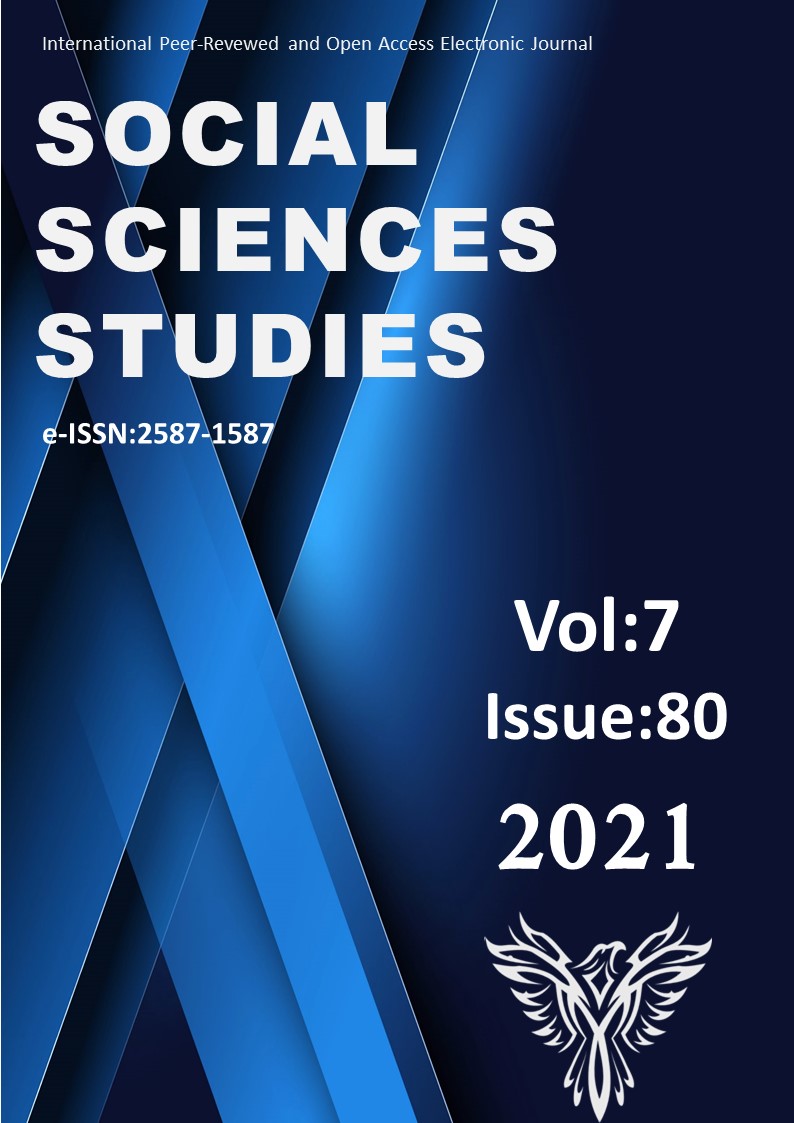Author :
Abstract
Dengeli kentleşmenin nüfus birikim süreci, dengesiz kentleşmenin ise nüfus yığılma süreci olarak gerçekleşmesi nüfus yoğunluğuna sağlık merceğinden bakılmasını gerekli kılmaktadır. Günümüzde yaşanan COVID-19 krizi, nüfus yoğunluğunu sorgulatarak kentsel direnç bağlamında farklı türde mekânsal talepleri beraberinde getirmektedir. Salgın durumlarında hane halkı hastalıktan korunmak adına, vaktini çoğunlukla evlerinde ya da sokak, bahçe gibi yarı kamusal mekânlarda geçirmektedir. Toplumsal olarak üretilen kentlerde kamusal mekân önemli bir aktördür. Kentsel mekânın kamusallık boyutu vurgulandığı halde, kent literatüründe yarı kamusal mekâna yeterince yer verilmediği görülmektedir. Literatürdeki söz konusu boşluğu doldurmak çalışmada hedeflenenler arasındadır. Bu bağlamda, toplum ile mekân ilişkisinde sosyal mesafe kavramının yaşadığımız pandemi sürecinde sosyolojik olarak hegemonya kurduğu iddiasıyla “yarı kamusal mekân” kavramı tercih edilmiştir. Analizimize esas teşkil eden kavramsal araç bahçe şehir (garden city) kuramıdır. Howard tarafından geliştirilen bahçe şehir kuramı, doğa ile bütünleşik bir kent modeli öngörmektedir. Kentsel modernitenin geleneksel kent dokusunun değişimine sebep olmasıyla, kırın yerleşme üretiminde önemli rol oynayan müstakil evlerin yerini apartmanlar ve siteler almıştır. Çalışma kapsamında, hane halkıyla derinlemesine görüşme yapılarak pandemi sürecinde kırın kentsel modernite aracı olduğu yarı kamusal mekân kullanımının hegemonik bir hal aldığı öne sürülmüştür. Yarı-yapılandırılmış derinlemesine görüşme çalışmanın metodu olarak belirlenmiştir. Buna ek olarak, kentsel planlama kurgusunda yerleşim alanlarını şehrin merkezinden çeperine doğru aktarmak ve ev-konut tipolojisine sağlık merceğinden bakılarak eko-kent mimarisi pratiklerini öncelikli olarak ele almak hususunda öneriler geliştirilmiştir.
Keywords
Abstract
Balanced urbanization as a population accumulation process and unbalanced urbanization as a population accumulation process makes it necessary to look at population density from the lens of health. The current COVID-19 crisis brings with it different types of spatial demands in the context of urban resilience by questioning population density. In order to be protected from the disease in epidemic situations, households mostly spend their time in their homes or in semi-public places such as streets and gardens. Public space is an important actor in socially produced cities. Although the publicity dimension of the urban space is emphasized, it is seen that semi-public space is not sufficiently included in the urban literature. It is among the aims of the study to fill this gap in the literature. In this context, the concept of "semi-public space" has been preferred, with the claim that the concept of social distance in the relationship between society and space establishes sociologically hegemony during the pandemic process we live in. The conceptual tool that forms the basis of our analysis is the garden city theory. The garden city theory developed by Howard predicts an urban model integrated with nature. As urban modernity caused the change of the traditional urban fabric, detached houses, which played an important role in the production of rural settlements, were replaced by apartments and sites. Within the scope of the study, it was argued that the use of semi-public spaces became hegemonic during the pandemic process, by conducting in-depth interviews with households. Semi-structured in-depth interview was determined as the study method. In addition, proposals have been developed to transfer residential areas from the city center to the periphery in the urban planning setup and to consider eco-urban architecture practices as a priority by looking at the house-housing typology from the health lens.
